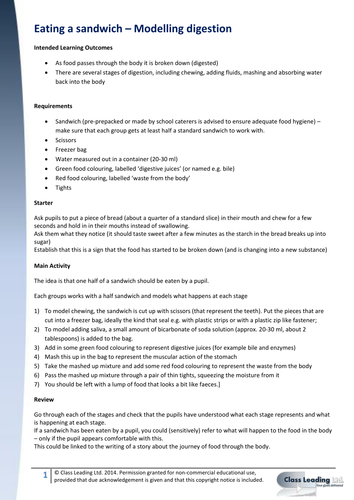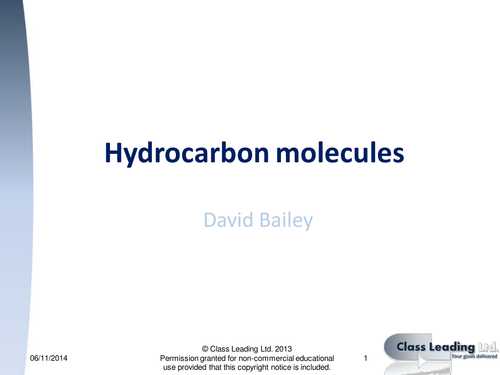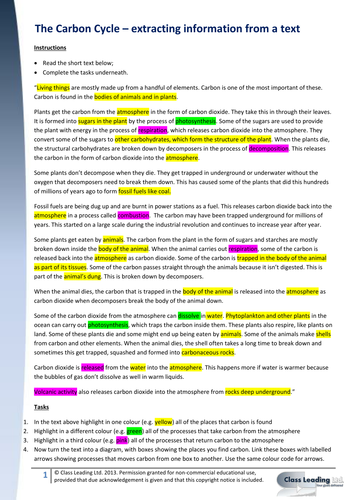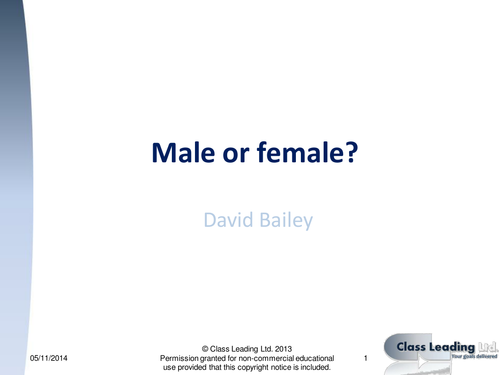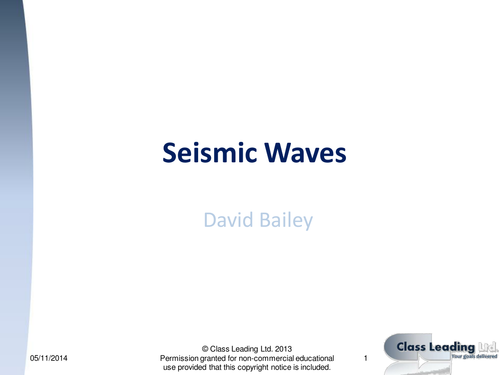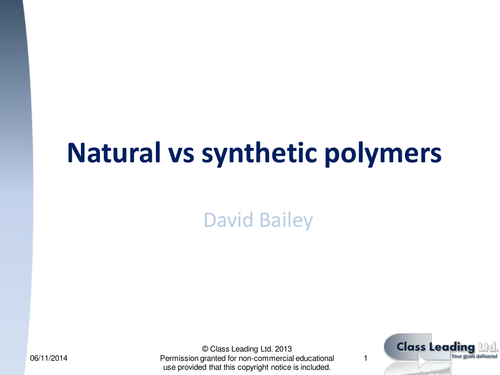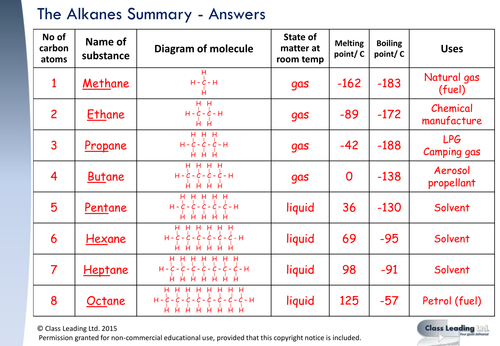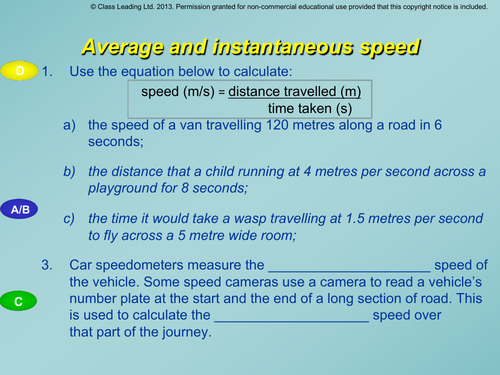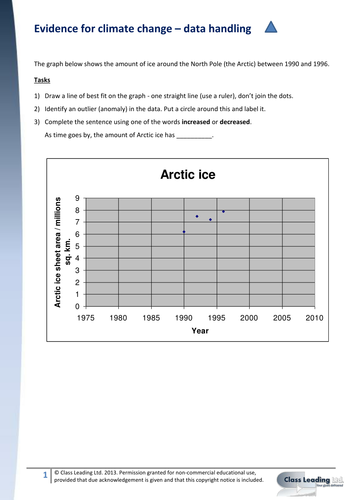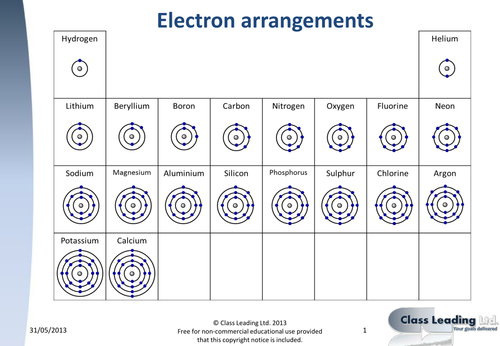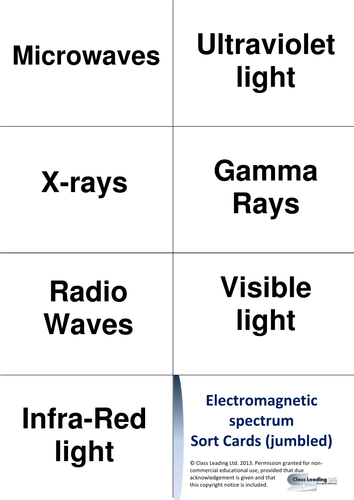312Uploads
252k+Views
191k+Downloads
All resources

Workload Reduction - GREAT lesson planning
This is a lesson template and guidance document and is designed as a workload reduction tool for whole school use.
Many different subject areas and different phases have different requirements of lesson and lesson sequence planning. Across all subjects there are some common areas that are features of effective teaching, regardless of the subject. These are the features included in GREAT lesson planning.
This could be used as a short-term (lesson plan) or medium-term plan (scheme of learning that covers a sequence of lessons) depending upon the subject or context.

Resistance of LDR & thermistor - graded questions
This activity contains a powerpoint with graded questions & answers and matching pupil activity sheets, designed to be used at the end of a lesson and/or the start of the next lesson to review previous learning. The questions are based on the previous OCR 21st Century Science Specification unit P5, although could be used with other exam boards.
Clicking through the show reveals answers one a time. These reduce to A5 easily, the ideal size for most pupils. Please note grades are approximate.

Eating a sandwich - modelling digestion
There are two parts to this activity, one is a practical activity to model the process of digestion. The other is a powerpoint slideshow to show what happens to the food on its journey through the body. If using with KS3 then the learning outcomes on the activity plan could also include breaking up of molecules in digestion. If using with KS2 for the new curriculum, the powerpoint will include some terms/slides that you may wish to miss out, so it has been left in an editable form.
Please ensure that you carry out a risk assessment before carrying out a practical activity.

Hydrocarbon molecules - graded questions
This activity contains a powerpoint with graded questions & answers and matching pupil activity sheets, designed to be used at the end of a lesson and/or the start of the next lesson to review previous learning. The questions are based on the previous OCR 21st Century Science Specification unit C2, although could be used with other exam boards.
Clicking through the show reveals answers one a time. These reduce to A5 easily, the ideal size for most pupils. Please note grades are approximate.

The greenhouse effect - graded questions
This activity contains a powerpoint with graded questions & answers and matching pupil activity sheets, designed to be used at the end of a lesson and/or the start of the next lesson to review previous learning. The questions are based on the previous OCR 21st Century Science Specification unit P2, although could be used with other exam boards.
Clicking through the show reveals answers one a time. These reduce to A5 easily, the ideal size for most pupils. Please note grades are approximate.

The Carbon Cycle - Extracting info from a text
Keywords: Carbon cycle, photosynthesis, respiration, decomposition, combustion.
An activity sheet and guidance sheet (with answers highlighted) in which students extract information from a text and then use this to identify the processes in the carbon cycle and ultimately construct a diagram from these. These can then be compared to one published in a textbook to allow students to make corrections. This works exceptionally well as a peer assessed activity.

C4 Electron structure & ionic bonding revision
Keywords: structure, bonding, electron, energy levels, shells, orbitals, rings, periodic table, patterns.
Notes: This is a revision summary sheet that has questions about structure and bonding relating to electron arrangements and ion formation.
Please note that this resource was originally designed for unit C4 of OCR 21st Century Science, but is applicable to other specifications.
An answer sheet has now been addedl.

Male or female - graded questions
This activity contains a powerpoint with graded questions & answers and matching pupil activity sheets, designed to be used at the end of a lesson and/or the start of the next lesson to review previous learning. The questions are based on the previous OCR 21st Century Science Specification unit B1, although could be used with other exam boards.
Clicking through the show reveals answers one a time. These reduce to A5 easily, the ideal size for most pupils. Please note grades are approximate.

Seismic Waves - graded questions
This activity contains a powerpoint with graded questions & answers and matching pupil activity sheets, designed to be used at the end of a lesson and/or the start of the next lesson to review previous learning. The questions are based on OCR 21st Century Science Specification, although could be used with other exam boards.
Clicking through the show reveals answers one a time. There are two slightly different activity sheets for differentiation - one has key words, the other without. These reduce to A5 easily, the ideal size for most pupils. Please note grades are approximate.

Natural vs synthetic polymers - graded questions
This activity contains a powerpoint with graded questions & answers and matching pupil activity sheets, designed to be used at the end of a lesson and/or the start of the next lesson to review previous learning. The questions are based on the previous OCR 21st Century Science Specification unit C2, although could be used with other exam boards.
Clicking through the show reveals answers one a time. These reduce to A5 easily, the ideal size for most pupils. Please note grades are approximate.

The Alkanes Summary (flipped learning)
This is a collection of separate pdf documents that help learners summarise information about the alkanes.
Each of the different sheets allows for a different level of support and challenge
- Sheet A is totally blank.
- Sheets B and C have fewer sections to fill in.
- Sheet D has all of the molecules drawn.
- Sheets E involves some reading for information and only has a limited amount of information and could be good for the least able.
- Sheet F, many of the answers can be deduced (at least approximately) and can be good for stretching the most able.
It is intended that the activity be carried out as 'flipped learning' so that learners complete this activity before learning about the alkanes and/or fractional distillation.

Average & Instantaneous speed - graded questions
This activity contains a powerpoint with graded questions & answers and matching pupil activity sheets, designed to be used at the end of a lesson and/or the start of the next lesson to review previous learning. The questions are based on the previous OCR 21st Century Science Specification unit P4, although could be used with other exam boards.
Clicking through the show reveals answers one a time. These reduce to A5 easily, the ideal size for most pupils. Please note grades are approximate.

Evidence for climate change - data handling
This is a short standalone activity, good for developing higher order thinking skills and providing an opportunity for cognitive conflict and discussion. Firstly either allow the students to work through the first two set of tasks sequentially. Alternatively, one half of class can be given first sheet,marked with a triangle, the other half being given the ones marked with a square to be worked on independently. After a few mins pair up with third sheet. Students respond well to even quite tricky questions.

Electron arrangement worksheet
This resource contains a worksheet and answer sheet for showing the electron arrangements of the first 20 elements.
A premium resource is also available that shows an animated PowerPoint slideshow and has a variety of different sheets with various levels of scaffolding to support learners. This can be found here: https://www.tes.com/teaching-resource/-12957111

Thinking About Goldilocks and the Three Bears
This activity is a context led approach to look at changes over time, in particular how temperature changes as time goes by.
Children find it much more interesting that watching the change in temperature as water cools.
The activity centres around finding that learners will find surprising helping them make progress as a results. There is an engaging start to the activity through a very familiar story.

Electromagnetic (EM) Spectrum sort cards
These sort cards can be used as a starter or starting point for the topic of the EM spectrum and again as a review/ plenary. They can also be used to help revise the sequence of the EM spectrum. This activity goes well with the EM grid activity.
This resource is part of a sequence with the following three other resources:
This resource
EM spectrum sort cards https://www.tes.com/teaching-resource/resource-6341302
IR remote control https://www.tes.com/teaching-resource/resource-12952897
UV Washing powder https://www.tes.com/teaching-resource/resource-12952892

Animated Electron Arrangements
This resource contains an animated PowerPoint slideshow and a variety of sheets, that provide various levels of scaffolding that can be used to accompany this. This can be used as a teaching tool to help pupils learn the pattern of electron arrangements in the first 20 elements. It can also be used as a revision tool to recap the electron arrangements or as an independent learning tool to help learners explore the arrangements.

Home experiment: Infrared remote control
In this video, which is aimed at KS4 pupils, you can see an infrared remote control. The remote control is pointed at the camera and a button is pressed. You can see the signal from the remote control, even though it would be invisible if you were to look at it with your eyes directly. The camera used is sensitive to infrared and so shows it up on screen. Pupils may be able to repeat this experiment at home, although some cameras include infrared filters to reduce glare from sunlight, so it may not show up properly.
This resource is part of a sequence with the following three other resources:
EM spectrum grid https://www.tes.com/teaching-resource/resource-6341301
EM spectrum sort cards https://www.tes.com/teaching-resource/resource-6341302
This resource
UV lamp and washing powder https://www.tes.com/teaching-resource/resource-12952892

Experiment: UV and washing powder
In this video, which is aimed at KS4 pupils, washing powder is shown under an ultraviolet lamp. This shows the fluorescence from the washing powder as the UV light is absorbed and visible light is emitted from the powder, making it appear much brighter than the washing powder would be if it was simply reflecting the light.
This resource is part of a sequence with the following three other resources:
EM spectrum grid https://www.tes.com/teaching-resource/resource-6341301
EM spectrum sort cards https://www.tes.com/teaching-resource/resource-6341302
IR remote control https://www.tes.com/teaching-resource/resource-12952897
This resource
Bundle

Thinking About - Primary Investigations
In this bundle, two resource packs are available - Thinking About: Coke & Mentos and Thinking About: Goldilocks & the Three Bears.



